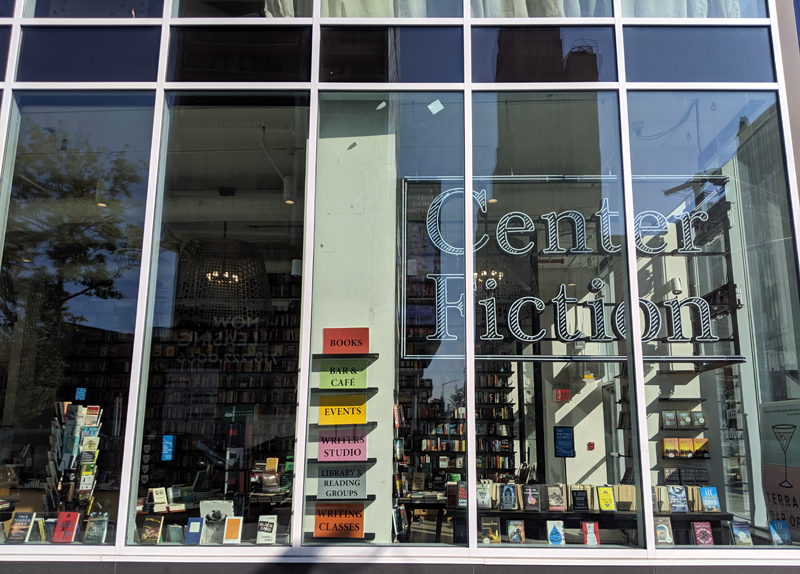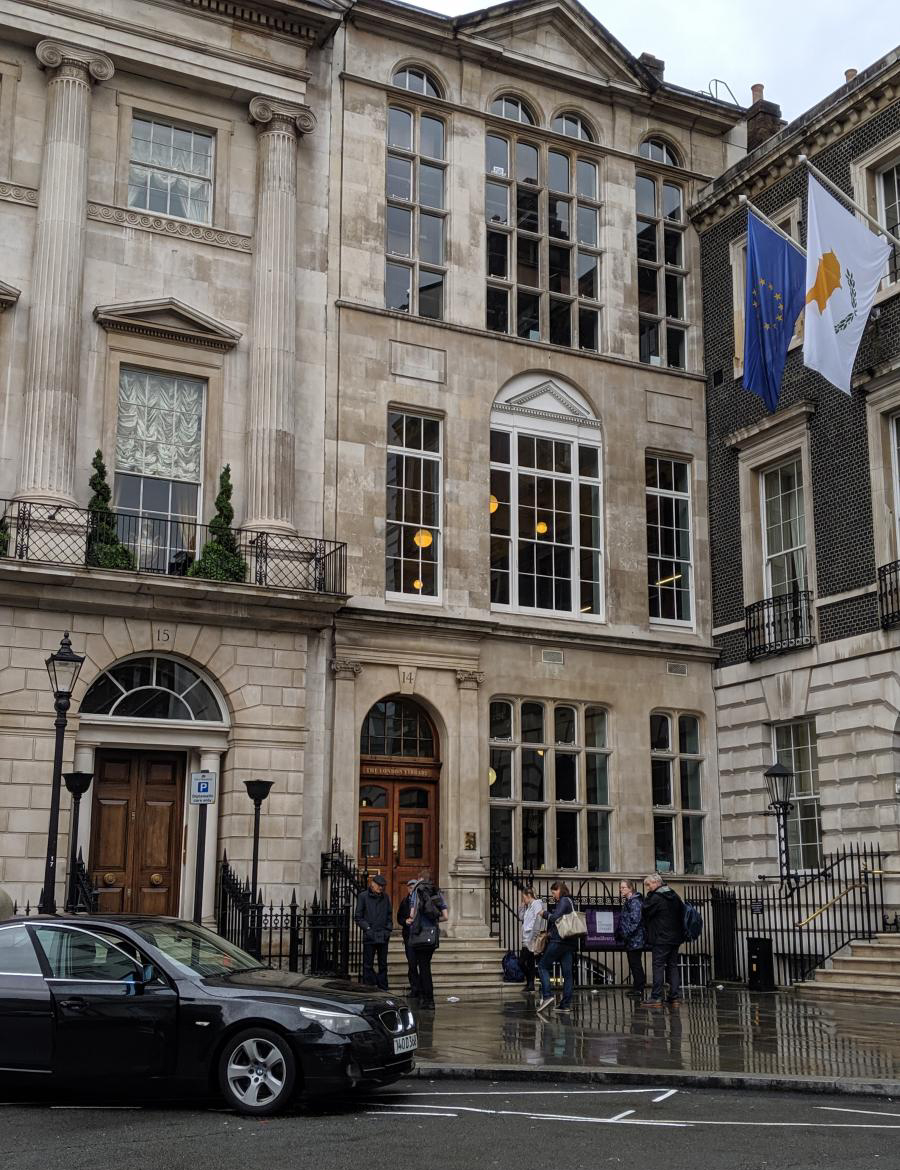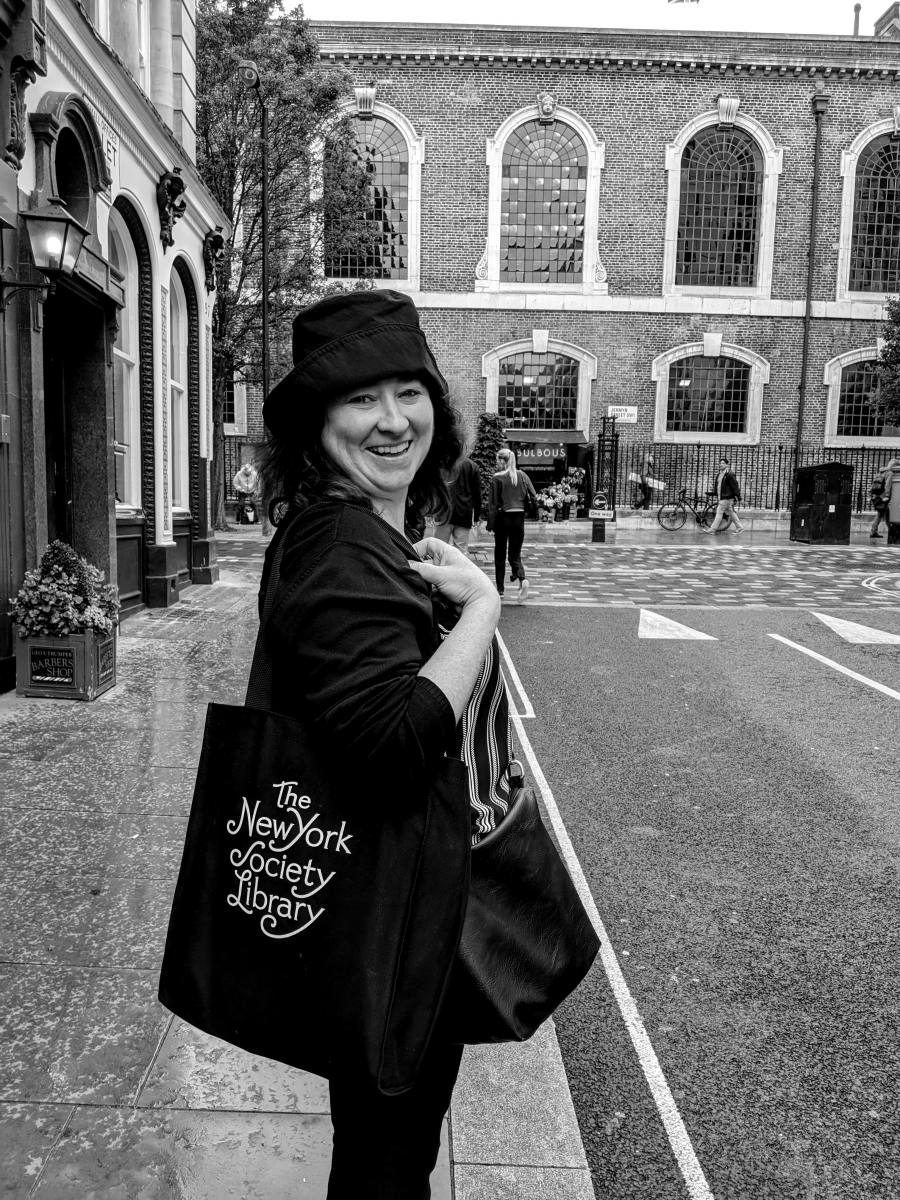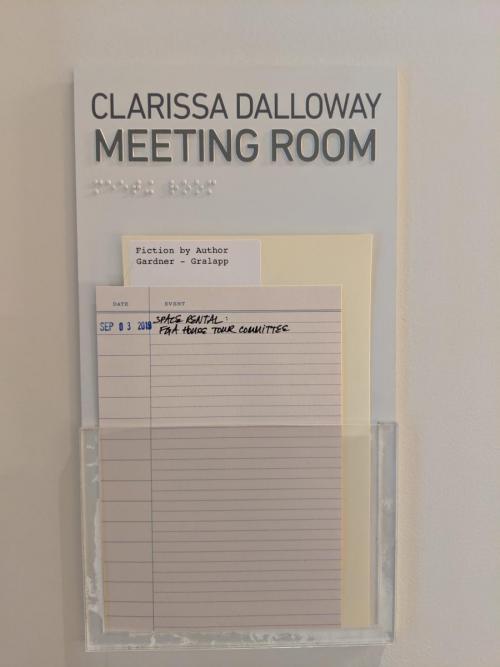Membership Libraries and Independent Libraries
In late September, I had the great pleasure of getting together with fellow directors of membership libraries across the U.S. and the U.K. You may have read my reports (here and here) from previous annual meetings of the American Membership Libraries Group (MLG), an association founded in 1991, as a support group for our unique institutions. This year, the MLG members were also invited to London to participate in a joint conference with our colleagues from the U.K.’s Independent Libraries Association (ILA).
Our week of meetings began on a Sunday in Brooklyn at the recently reopened Center for Fiction. If you haven’t been there yet, go! The Center for Fiction (founded as the Mercantile Library in 1820) moved to Lafayette Street from midtown Manhattan earlier this year. Their new facility houses a bookstore, café, events space, writers studio, and a pub (!) in addition to the library, of course. After the tour of the new facility, thirteen of us gathered for two days of roundtables where we discussed past and future projects, events and programming, fundraising strategies and capital campaign initiatives, diversity and inclusion initiatives, and reciprocal privileges. Stay tuned for updates on our decisions surrounding visits and privileges among member institutions.

Several of us then continued to London, where the joint conference between the MLG and the ILA commenced at the East India Club, next door to The London Library on St. James Square (note that we are not the only library with space issues!) For the next three days, the delegates heard presentations and participated in discussions about collections management, fundraising (London’s “Loos for the Library” campaign aims to refurbish well, you know), governance, membership trends (increasing for most of our libraries), accessibility and preservation of special collections, digitization projects, and public relations and communications.

One of the most enlightening and encouraging parts of the week was the very first exercise - imagining the future of our libraries in 2050 - facilitated by London Library member and writer David Waller. David had us break out into small groups to brainstorm, and when we all got back together, found that we were remarkably consistent in our outlook. Words like “quiet,” “refuge,” and “haven” came up in all groups, and spoke to our belief that we would remain places where people could engage in deep thinking, concentration, work, and research. We see ourselves as gathering places for writers and readers and students/researchers. But we acknowledged that we could not be all things to all people, and that our strategy should focus on knowing who we are. While we all acknowledged that e-books and digital resources would play an even larger part in our purchases and programming in the future, we all focused on the importance of our physical book collections. We began our institutional lives with a book collection, which have grown in importance. We have thrived and prospered from our founding to today by sticking to our core as a lending library, and adapting for the times, or as financial needs dictate. For many of us, this has meant adding events and programming, curating exhibitions, carving out spaces for members to write and read and create, awarding book prizes, and for some, pursuing ancillary income streams like bookstores, a hotel (Gladstone’s Library), and cafes (The Portico Library.) But our book collections are our foundation, and we feel they will be so in our future.

We are large (The London Library, 1 million books!), small (The Portico Library, 25,000 books), and everything in between. Some, like the NYSL, were founded in the 18th century (Charleston Library Society, 1748; The Leeds Library, 1768). And despite the emergence of the government supported public library system in the 19th century, membership libraries have opened in every century since, including the newest: Folio: The Seattle Athenaeum, founded 2015. Some of us have endowments, some do not. Some of us own our buildings – many of them a century or more old - and therefore must deal with all the problems that entails; one has a $1 per year lease for 10,000 years (you read that right!) We all struggle with retention, especially of members who joined within the past three years. We are all working to raise our profiles, grow memberships, attract donors, increase circulations, and engage our current members by providing new and creative programming like FrightFest in the Library: Horror Out Loud: Prose Open Mic at The Leeds Library and War and Peace in Pieces at the Mercantile Library of Cincinnati). We regularly and cheerfully steal good ideas from each other, without remorse. We are unique institutions with few peers. I can’t overstate the importance of these meetings and conferences, which provide welcome opportunities to find answers to burning questions, share best practices, and support the continued success and flourishing of our membership libraries.


Disqus Comments